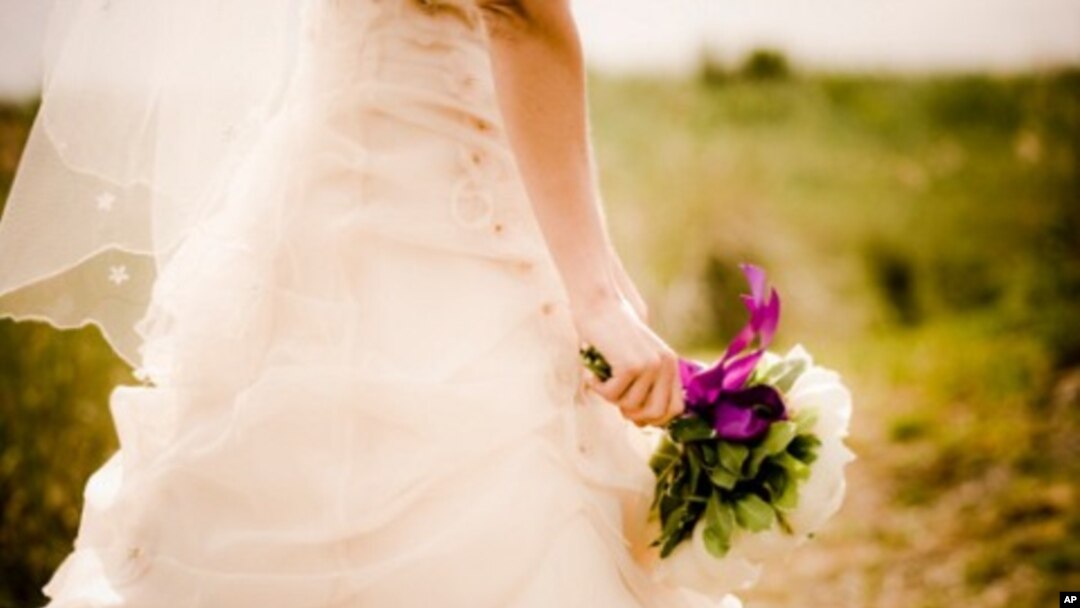Marriage ceremonies of any kind are steeped in tradition. Consider some of the traditional Western elements: bridesmaids and groomsmen dressed to match the bride and groom; the wedding veil; flowers for decoration; a celebratory cake.
Behind the veil
Why the attendants? Protection, believe it or not. Attendants were present at weddings as far back as Roman times; they were dressed like the bride and groom so that evil spirits would not know who was getting married. The bride’s veil, too, was used to ward off evil spirits, although by the 19th century it had evolved into a symbol of modesty and chastity.
Trendsetter
The white wedding dress, however, is relatively new. Before the 19th century, brides wore a variety of colors, but when Britain’s Queen Victoria got married to Albert of Saxe-Coburg in 1840 she opted for white. After the official wedding photos were published, the trend began to spread. Who knew her decision would define the norm for Western weddings for a century-and-a-half?
Certainly, Victoria and Albert’s wedding was more than a typical British wedding, just as William and Kate’s wedding will be. But their ceremony will include elements familiar to any British commoner.
Tradition
What makes a traditional British wedding? Components include formal dress, elaborate hats, cheeky speeches, and lots of confetti. As well as a dessert Americans love to hate: fruitcake.
"It’s always been sort of a war of the hats at a British wedding," says Belinda Hanks, editor of the British wedding website Confetti (www.confetti.co.uk). She says wedding-goers, particularly the mothers of the bride and groom, may try to outdo each other for the most stylish or elaborate hat. "We love a good hat in this country."
Dress code
The dress code for a typical British wedding is formal in general. For this Friday’s royal wedding, the code is "morning dress," meaning men are to wear a formal coat with tails and a waistcoat. Will and Kate’s wedding invitation also specifies men may wear military uniforms or business suits. Men may embellish their look with gloves or a top hat if they desire.
Women are advised to wear dresses that are conservative and fashionable, avoiding the color white, so as not to compete with the bride, and, in some circles, black because it is the color of mourning. Attendees to the royal wedding are advised to stay away from flashy clothing or accessories. A possible exception, of course, is the aforementioned hat, which can be quite elaborate. (The prospect of wearing a hat at a formal occasion has been known to intimidate American women attending British weddings, as hats are much less common at formal events in the United States.)
Timing
Weddings can be set at any hour, but many, like William and Kate’s wedding, begin mid-morning, the better to party all day. A typically hour-long ceremony is followed by lunch and a reception featuring champagne, music, and wedding cake. At their Buckingham Palace reception, hosted by Queen Elizabeth II, Kate and William will have the traditional wedding cake made with fruit and nuts, ingredients that will preserve well - for the couple is expected to save the top layer of the cake to celebrate the christening of their firstborn.
The royal reception will also feature a groom’s cake, an American trend gaining traction overseas. William's’ groom’s cake is to be made of crumbled McVitie’s "biscuits," a common tea cookie that will lend a lighthearted flair to the afternoon.
Speeches
A major part of the reception: speeches.
"We love our speeches," says Hanks. "The party doesn’t get started until the speeches." In fact, she says during the meal someone circulates through the room taking bets on how long the best man’s speech will be. Typically the father of the bride, and then the groom, rise to thank the guests for coming and the participants in the service for their help. Gifts are given to the bridesmaids and flowers to the mothers of the bride and groom. But with the best man’s speech, the tone changes.
"Embarrassment ensues," says Hanks of the lighthearted ribbing the best man often gives the groom. "It’s a time for joy and hilarity and a bit of tongue-in-cheek. It’s the mark of ‘OK, you can have a good time now.’"
After-party
Like William and Kate, a couple may elect to throw an additional party in the evening. In the case of the royal wedding, Prince Charles will host a reception for 300 guests - a chance for the newlyweds to enjoy a more intimate setting with friends and family. Music and dancing are likely to be the order of the evening.
A final note: most weddings are preceded by "hen" and "stag" parties, in which the bride and groom’s friends take them out separately for a last fling before tying the knot. Kate and William were both reported to have celebrated with friends at private homes.
Formal Clothing, Informal Speeches Typical at British Weddings

Formal Clothing, Informal Speeches Typical at British Weddings

